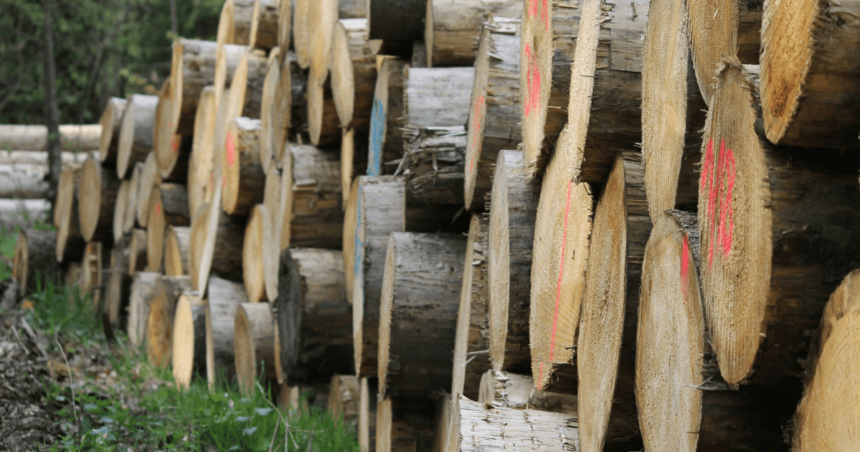Biomass is becoming essential to the green energy mix. It uses organic materials like trees and forestry waste to generate renewable power. Converting this natural matter into electricity or biofuels through gasification and combustion offers a carbon-neutral alternative to fossil fuels.
Its ability to provide consistent, reliable energy makes it a valuable resource for electric utilities, especially as the industry shifts toward more sustainable solutions. There is increasing pressure to reduce emissions and meet environmental targets. Can biomass help bridge the gap between traditional power sources and cleaner options like wind and solar, and offer a practical way for utilities to move closer to their sustainability goals?
The Science Behind Biomass Energy
Lignocellulosic biomass like wood is converted into biofuels through a series of processes. These break down its rigid structure, which consists of cellulose, hemicellulose and lignin. Providers can efficiently transform this resource into electricity using technologies such as pyrolysis and gasification.
In 2022, the U.S. produced around 18.7 billion gallons of biofuels, showing the growing demand for renewable options. Advanced techniques like enzymatic hydrolysis and catalytic conversion boost efficiency and allow electric utilities to tap into bioenergy as a cleaner, more sustainable power source.

Types of Wood Suitable for Biofuel Production
Not all wood types offer the same benefits when turning trees into green fuel. Some burn more efficiently, while others are more sustainable due to rapid growth or availability as waste products. Selecting the appropriate resource maximizes the energy output and minimizes the environmental impact.
Here are several types of wood in biofuel production, including natural and reclaimed options:
- Hardwoods like oak, maple and beech: Known for their dense structure, these woods provide high output and are ideal for biofuel but take longer to grow.
- Softwoods like pine, spruce and fir: While less dense, softwoods grow faster and are abundant, making them a practical choice for large-scale biofuel production.
- Fast-growing species like poplar, willow and eucalyptus: These trees are cultivated specifically for energy production. They offer a sustainable and renewable source of biomass.
- Reclaimed wood from beams, flooring and siding: Salvaged from old buildings and structures, this wood cuts down on deforestation and adds an eco-friendly element to biofuel production.
- Forestry waste like sawdust, wood chips and branches: Residual wood materials from logging and milling are commonly repurposed into bioenergy, reducing waste.
Benefits of Using Trees as a Renewable Fuel Source
Biomass power stands out for its ability to reduce carbon emissions compared to fossil fuels. Since the carbon absorbed by trees as they grow balances the carbon dioxide released during combustion, biomass is considered a carbon-neutral source. This is especially important in the U.S., where energy consumption is about four times higher than in many other countries. Relying on this approach allows the electricity utilities industry to curb emissions while meeting high demands.
Sustainable forest management is crucial in this process. Trees harvested for electricity are replaced, promoting long-term environmental health.
Another advantage of biomass is its flexibility. Unlike some renewable sources, it can be a base-load power source and adapt to peak-load demands when necessary. This versatility makes biomass a reliable and practical solution for integrating alternative energy into the grid.

Challenges of Scaling Tree-Based Bioenergy
While green fuel offers many benefits, the limited availability of sustainable forestry resources presents a significant challenge. Meeting the growing demand requires careful forest management, but the supply of suitable wood is not limitless.
Ensuring sustainability while scaling up use puts pressure on forest ecosystems and raises concerns about overharvesting. Additionally, transporting biomass to energy facilities can be complex and costly. Large quantities of wood and forestry waste require specialized logistics, often over long distances.
Another issue is the continuous increase in ash quantity from biomass combustion, which can overwhelm ash-storing facilities and drive operational costs. This increase in byproducts poses storage and environmental management challenges for electric utilities.
In addition to these logistical concerns, there are questions about biomass’s impact on biodiversity and land use. Clearing land for production can lead to habitat loss and ecosystem disruption. This raises concerns about balancing renewable energy goals with the need to protect natural environments.
Innovations and Future Potential in Tree-Based Biofuels
Advancements in biofuel technology drive significant improvements in energy yield. They make biomass an increasingly efficient and attractive option for electric utilities. Innovations like enzymatic breakdown and catalytic conversion allow more energy to be extracted from wood and other biomass sources.
Moreover, pairing bioenergy with renewables like solar or wind through hybrid approaches enhances grid sustainability by providing consistent power alongside intermittent sources. The development of fast-growing biomass crops and engineered trees also offers a promising way to ensure a steady, renewable fuel supply, further supporting the transition toward greener solutions.
Driving the Future of Energy With Tree-Based Biofuels
Continued investment in tree-based biofuels creates a scalable, sustainable future supporting power generation and environmental goals. Electric utilities should consider embracing innovative biofuel strategies to reduce emissions and enhance grid reliability as they shift to alternative energy.





